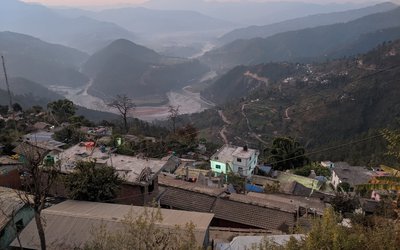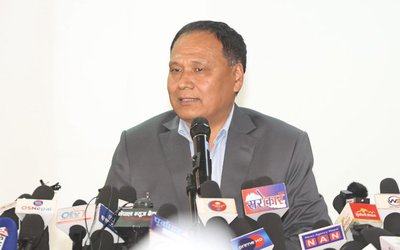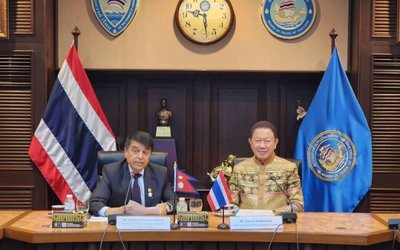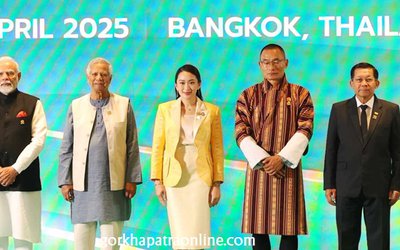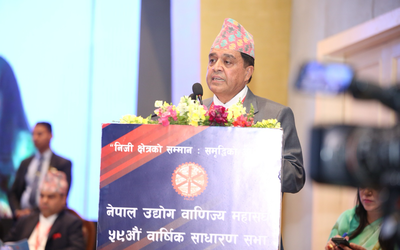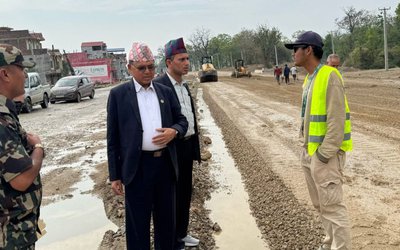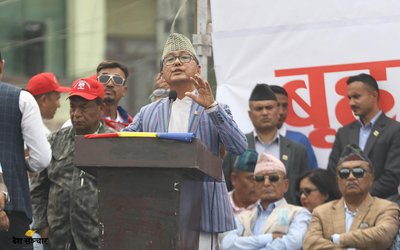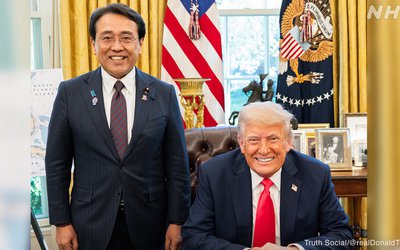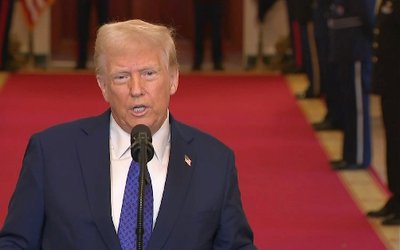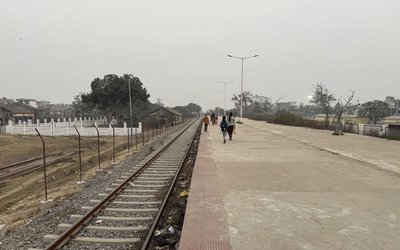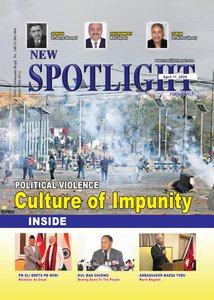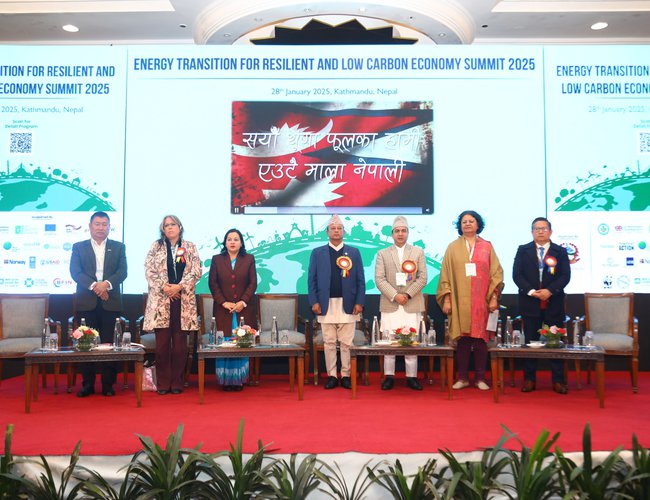
Nepal has committed to achieving zero emissions by 2045 as part of its NDC commitment under the Paris Agreement, emphasizing the importance of reducing the use of dirty energy and transitioning to renewable clean energy. While the target has been set, concerted efforts from all stakeholders are essential to reach this goal. Nepal must focus on transforming energy consumption in household cooking, transportation, and industries by replacing current reliance on biomass and fossil fuels.
Dr. Ram Prasad Dhital, chairperson of the Electricity Regulatory Commission, emphasized the global importance of energy transition to achieve climate goals. Nepal is in a unique position with abundant hydropower resources, growing energy demand, and potential for cross-border trade. However, challenges such as regulatory gaps, capacity limitations, and the need for policy alignment must be addressed.
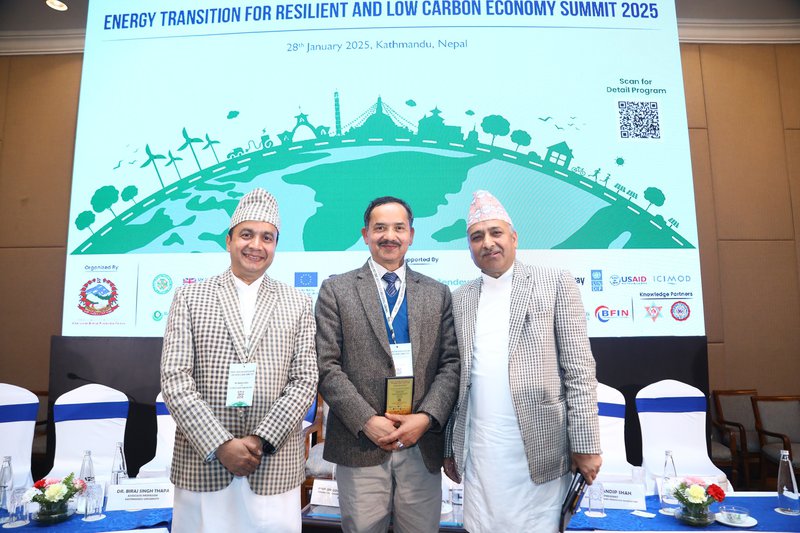
While hydropower dominates Nepal's green energy sector, there are other cost-effective and reliable renewable energy sources like solar and wind available. It is crucial to triple the capacity of renewable energy by 2030, increasing Solar PV capacity to 5457 GW, hydro to 1465 GW, Wind onshore to 3040 GW, wind offshore to 494 GW, Geo Thermal to 105 GW, and CSP to 197 GW by 2030.
Energy Situation in Nepal
During his presentation, Dr. Dhital discussed the current state of energy in Nepal. He mentioned that over 90 percent of electricity generation in the country is derived from hydropower, with biomass being the primary energy source for rural households, accounting for over 60% of total energy consumption.
While s olar and wind energy are emerging, their adoption remains limited compared to their potential. Nepal heavily relies on imported petroleum products, leading to energy insecurity. The country's energy demand is projected to increase by 8% annually due to economic growth and urbanization.
Nepal's total installed capacity is 3,243 MW, with an annual per capita energy consumption of 400 units. Despite exporting around 700 MW of electricity in the summer, Nepal still imports electricity from India to meet its winter demands.
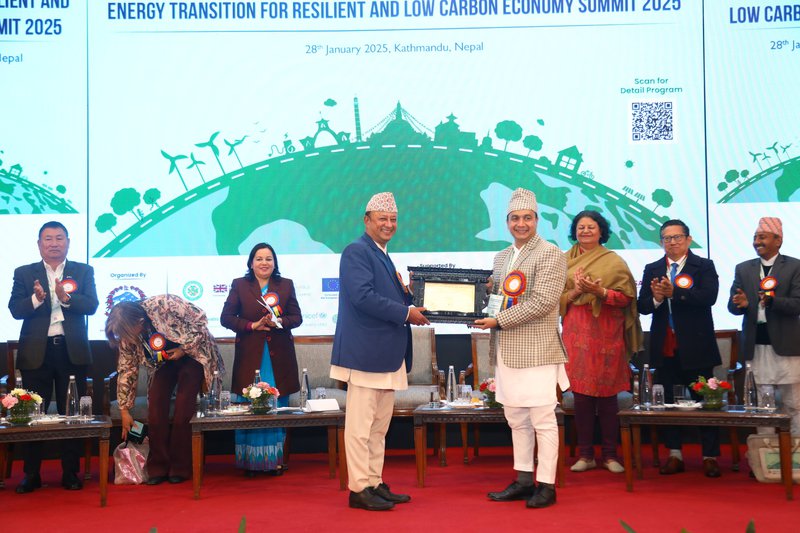
Professor Shobhakar Dhakal from the Department of Energy and Climate Change at the Asian Institute of Technology, Thailand, presented a detailed paper outlining Nepal's achievements and the challenges it faces in the energy sector.
Nepal has committed to generating 28,000 MW of electricity over the next 20 years, but the country's electricity infrastructure, including its transmission and distribution systems, remains inadequate. Currently, Nepal has a transmission system spanning 6,507 circuit km, with 13,050 MVA substations.
The country boasts a 99 percent electricity access rate and an average annual domestic consumption demand of approximately 12,700 GWh. Upgrading the current transmission system from 132 kV to 220 kV and 400 kV will require significant investment, but the Nepal Electricity Authority is facing financial constraints for such a large-scale project.
Recently, the progress of the Nepal Electricity Authority has been hindered by the Minister of Energy, Water Resources, and Irrigation's interference. The Minister's personal vendetta against Managing Director Kul Man Ghising is likely to have an impact on the power system's operations.
During the event's opening ceremony, Dr. Shobhakar Dhakal, a Professor at the Asian Institute of Technology (AIT), delivered a presentation on "International Experience, Opportunities, and Challenges for Nepal in Clean Energy Transformation for a Sustainable and Low-Carbon Economy."
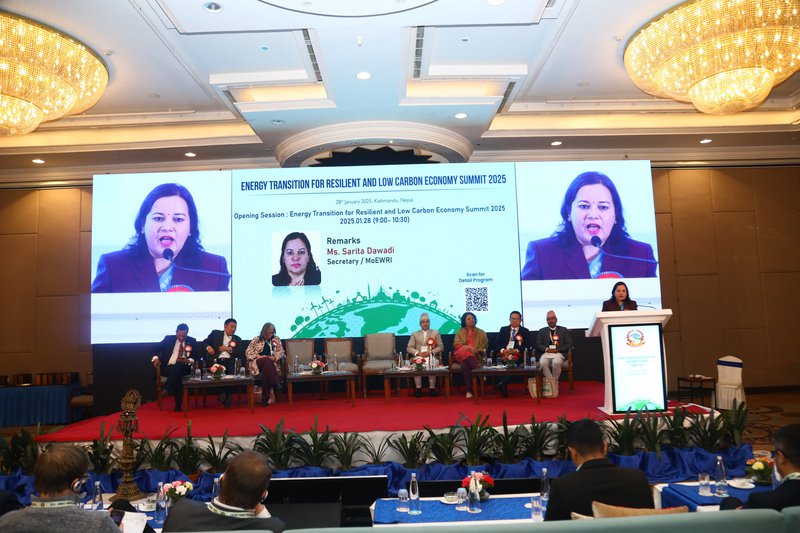
During his presentation, Dr. Dhakal focused on the global perspective of clean energy conversion for a sustainable and low-carbon economy. He also discussed international experiences in addressing the need for energy conversion, as well as Nepal's perspective on energy conversion, including its dimensions, options, and differences.
Dr. Dhakal highlighted the priority areas necessary to accelerate Nepal's energy transformation, emphasizing issues such as energy integration and connecting various technologies like micro and small hydropower, solar energy, wind energy, and biological energy to the national transmission grid. He also stressed the importance of upgrading decentralized renewable energy systems, adopting energy efficiency measures, and promoting private sector involvement in commercial clean energy conversion.
Dr. Dhakal underscored the need for a national policy, plan, and targets to increase investment and mobilize climate and carbon finance, as well as effective institutional arrangements and coordination for clean energy transformation.
Key Points from Professor Dhakal's Presentation:
-Total installed capacity: 28,500 MW
- Annual electricity consumption per person: 1,500 units
- Electricity export: 15,000 MW
- Transmission system: 17,446 circuit km; Substation: 40,000 MVA
- Electricity access: 100%
- Annual domestic consumption demand: Approximately 40,710 GWh
- Investment required for electricity generation projects: Approximately $30.7 billion
- Investment required for electricity distribution network: Approximately $1.2 billion
- Investment required for construction of transmission lines and substations: Approximately $5.6 billion
- Focus on NDCs, carbon neutrality, and net-zero pledges
- Transitioning away from fossil fuels and coal
- Increasing renewable energy deployment and energy efficiency
- Mobilizing climate finance
- Private sector driving energy investment decisions
- Governments influenc
ing capital flows
- Electrification of transport sector and urban public transport
- Transitioning to electric cooking and modernizing biomass use
- Improving energy efficiency in buildings and industries.
Grid decarbonization involves the use of solar and wind power, implementing storage solutions, limiting the addition of coal-based capacity, upgrading grid infrastructure for increased flexibility, boosting the share of nuclear energy, and potentially importing hydropower from Nepal and Bhutan
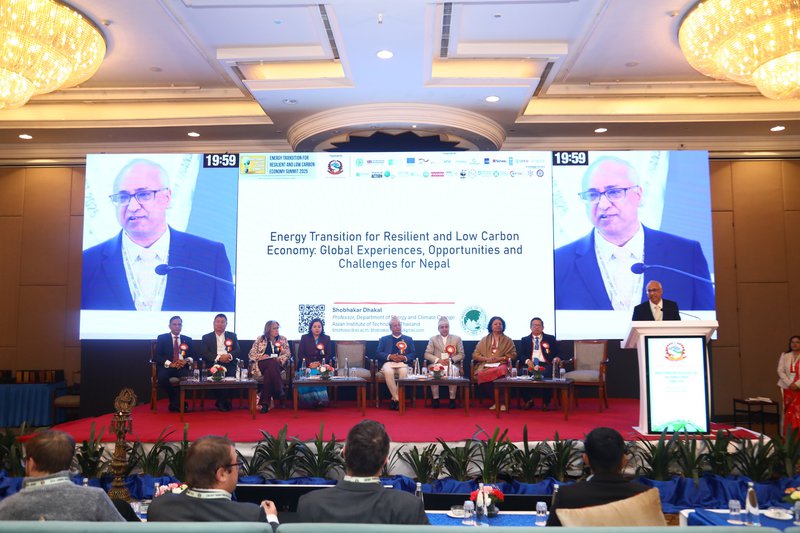
Industrial decarbonization focuses on green hydrogen, enhancing energy efficiency, electrifying industrial processes, utilizing renewable energy sources like biomass, and implementing carbon capture, utilization, and storage (CCUS). The transport sector is transitioning through innovative urban planning, promoting modal shifts, adopting low carbon powertrains such as battery electric vehicles, and incorporating biofuels.
The energy consumption target is set at 532 PJ in 2023, with a per capita final energy consumption of 18.25 GJ. The plan includes expanding hydropower capacity to achieve a 7% share, increasing modern renewable energy sources to 3%, modernizing traditional bio-based energy usage (which currently accounts for 64% of energy consumption, with fuelwood making up 57%), promoting clean cooking interventions, particularly through electrification, electrifying the transport sector, and developing necessary support infrastructure. The country aims to address its trade deficit, with fossil fuels accounting for 19% of imports and 21% of the trade deficit in the fiscal year 2022/23.
Efforts are underway to improve energy efficiency in buildings, industries, and transportation sectors. Grid modernization initiatives are focused on reducing losses, enhancing system flexibility for integrating distributed renewable energy sources, and ensuring reliability. The overall energy transition strategy emphasizes both local and global environmental sustainability, as well as considerations for a just and inclusive transition process.
Nepal's transition in cooking energy?
According to the national census, 51% of households use wood/firewood for cooking, while 44.3% use LPG, which goes against the Government's SDG target of limiting it below 40%.
Distributed power can help reduce T&D losses, lower the cost of T&D infrastructure, and enhance grid resilience (https://doi.org/10.1016/j.mset.2019.07.002).
The integration of acceptable solar/wind power into the existing grid depends on various factors. A decade ago, the debate was around 10-15%, but recent studies suggest it could be 20-30% before significant grid upgrades are needed to maintain stability. This percentage can be increased with grid enhancements and smart grid technologies.
The power quality and reliability of the grid in rural and isolated areas are poor, and on-grid/off-grid distributed sources can provide better support.
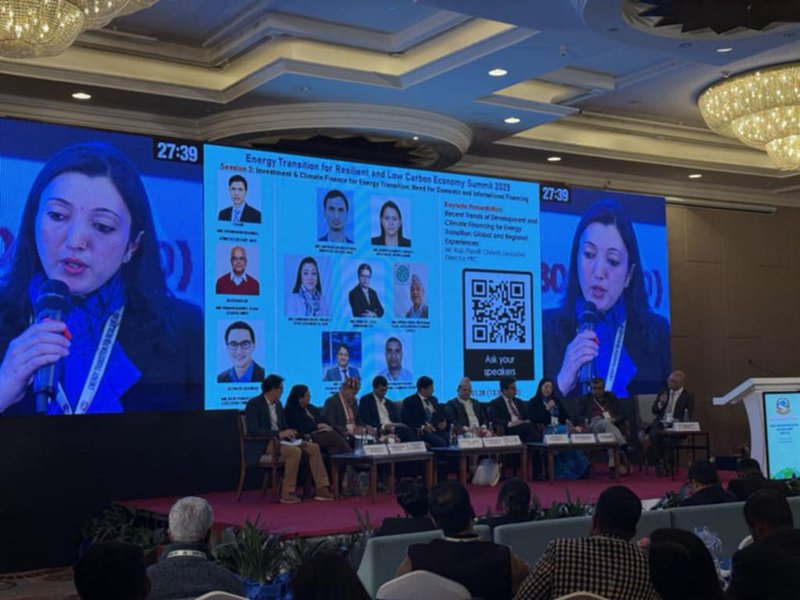
In her presentation, Grishma Shah from the Asian Development Bank highlighted the investment made by the Bank in expanding and strengthening hydropower projects, transmission lines and distributions. She said that ADB has played significant role in hydropower development over the last 50 years helping Nepal work towards achieve zero emission targets. Shed added that ADB has invested in both off-grid and on-grid projects and will continue to support Nepal in renewable and clean energy projects.
In Peninsular Malaysia, a 20% penetration rate of solar and wind power into the grid is considered an ideal limit to ensure electricity affordability, security, and reliability. The system can technically handle up to a 30% penetration level, but exceeding 30-40% could lead to higher electricity costs and pose affordability risks. Beyond a 40% penetration rate, scheduled solar curtailment may be necessary to maintain stability.
By 2024, the installed capacity is projected to be 3,243 MW, with 400 KWh per capita. The country aims to export 700 MW of electricity, achieve 98% access to electricity, and meet a demand of 12,700 GWh.
By 2035, the target is to have an installed capacity of 28,500 MW, provide 1,500 KWh per capita, export 15,000 MW, ensure 100% access, and meet a demand of 40,710 GWh. To achieve the goal of limiting the temperature increase to 1.5°C, there is a need to double investments in renewable energy and triple spending on energy efficiency by 2030. The investment requirements for renewable energy and efficiency technologies under the 1.5°C Scenario are substantial and increasing, with costs for most renewable energy sources decreasing while hydropower costs are rising. The Energy Transition for Resilient and Low Carbon Economy Summit-2025, organized by AEPC, recently concluded with discussions involving various stakeholders, including finance and investment experts in the sector.
The Clean Energy Day Conference focused on the transition to a sustainable and low-carbon economy, addressing key issues in the current energy supply landscape.
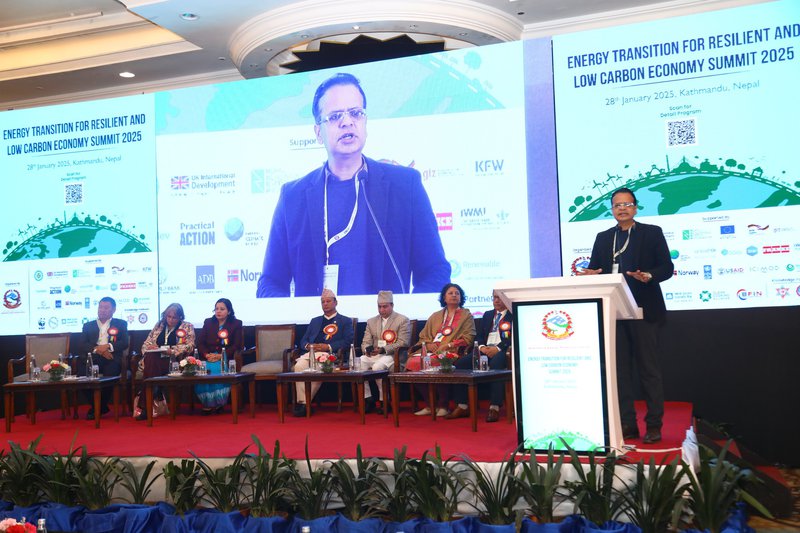
The United Nations has designated January 26th as "International Clean Energy Day" since 2024, aiming to raise awareness and promote the just and inclusive transformation to clean energy that benefits all living beings on Earth. Activities are planned to align with this goal.
Minister Khadka emphasized the government's commitment to developing a low-carbon economy through inclusive energy development during his speech at the conference opening. He highlighted the alignment of
the conference topics with the goals outlined in the recently approved "Energy Development Roadmap and Action Plan, 2081" by the Government of Nepal. Minister Khadka stressed the importance of continuing clean energy development to mitigate climate-related risks and achieve the goal of net zero emissions through renewable energy and energy efficiency.
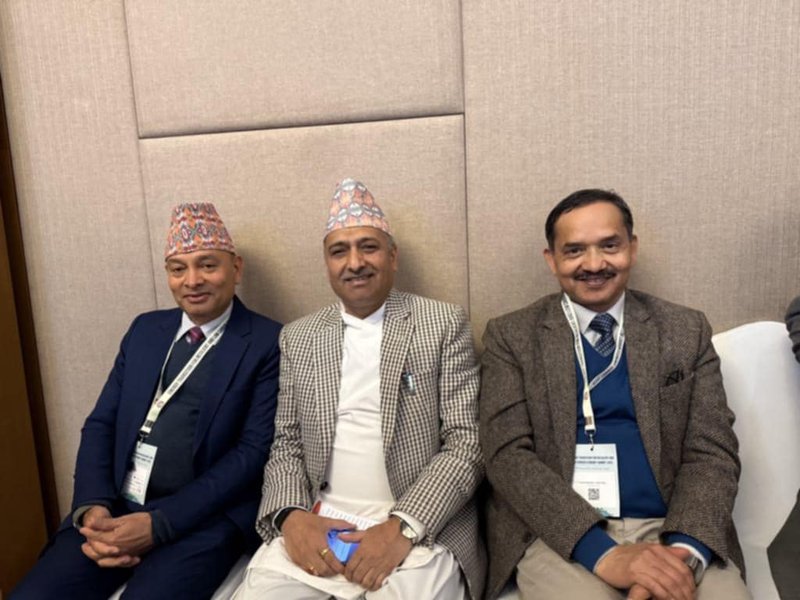
He called for support from national and international development partners in this endeavor and emphasized the role of the private sector in advancing renewable energy and energy efficiency. Minister Khadka also underscored the importance of extending energy access and ownership to all sectors of society as part of the government's efforts to achieve sustainable development goals.
Speaking at the event, Secretary of the Ministry of Energy, Water Resources, and Irrigation, Sarita Dawadi, emphasized the government's focus on renewable energy and energy efficiency in its energy-related policies. She highlighted the recent approval of the "Energy Development Roadmap and Action Plan, 2081" by the Government of Nepal as a key step in this direction.
Dawadi mentioned that the bill on renewable energy and energy efficiency is currently being discussed in the National Assembly, and the ministry's top priority is to ensure its passage in both houses of parliament.
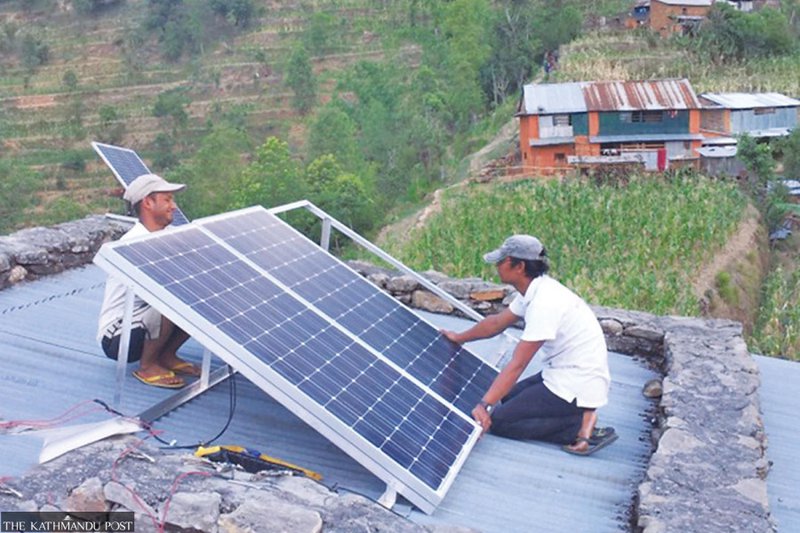
The conference provided a platform for stakeholders in the clean energy sector to share their experiences, achievements, opportunities, and challenges in Nepal. It was seen as a significant milestone in the development of renewable energy and energy efficiency, facilitating the exchange of best practices and knowledge in the field.
Through the conference, sector-specific needs, opportunities, and challenges were identified, and efforts were made to prioritize investable projects and attract investment for clean energy transformation.
The conference aimed to identify sector-specific needs, opportunities, and challenges, prioritize investable projects, and create opportunities for investment and resource mobilization for clean energy transformation. It focused on current development partnerships and future investment choices related to Nepal's energy transition and climate change, sharing successful project experiences and initiatives, enhancing potential investments, and promoting best practices in the field.
During the opening ceremony, Navraj Dhakal, the executive director of the center, highlighted the center's significant contributions to increasing energy access, promoting energy mix, and enhancing energy security in Nepal. The center is the main government body working in the renewable energy and energy efficiency sector.
The action plan includes providing electricity access to 100 percent of households within the next two years through off-grid solar, wind, and small hydropower systems in areas not reached by the national grid. It also involves connecting non-existing electrical infrastructure to the grid, generating energy from waste, establishing solar power purchase agreements, exploring the feasibility of grid-connected wind energy, and setting electricity purchase and sale rates for grid-connected energy storage systems.
Renewable energy initiatives, such as establishing standards for electrical equipment to enhance energy efficiency, conducting energy audits, promoting technologies like electric vehicles and green hydrogen for energy conversion, and enacting legal frameworks for renewable energy and energy efficiency, were discussed at the event.
During the program, Pippa Bird, Director of Development and Assistant Ambassador at the British Embassy in Nepal, expressed optimism about the future of energy transformation, highlighting the potential for achieving energy security and economic prosperity through such initiatives.
She emphasized the importance of improving access to energy to enhance energy efficiency and commended the Alternative Energy Promotion Center for organizing a significant conference aimed at promoting renewable energy and energy efficiency.
Dr. Pema Gamso, Director General of the International Centre for Integrated Mountain Development (ICIMOD), highlighted the potential for energy conversion in various sectors in Nepal, including households, agriculture, and transportation.
Dr. Gauri Singh, Deputy Director General of the International Renewable Energy Agency (IRENA), stressed the need for collaboration to triple the deployment of renewable power generation and double energy efficiency in order to promote renewable energy effectively.
Highlighting that over 60 percent of the total investment in the sector comes from the private sector, he emphasized the importance of increasing private sector investment. The conference facilitated the exchange of experiences, discussions on investment opportunities, and strategies to accelerate the transition to clean energy for a sustainable, low-carbon economy in Nepal. The event included five technical sessions, presentations, and discussions with
national and international stakeholders from governmental and non-governmental organizations, state and local governments, and experts in renewable energy, energy efficiency, and climate change.
With over 400 participants from research, academic, development, investor, private sector, media, civil society, and sector expert backgrounds, the conference provided a platform for collaboration. Discussions at the conference focused on identifying sectoral needs for energy transformation, investment requirements, climate finance mechanisms, and strengthening development cooperation.
The event also aimed to support the effective implementation of the recently approved "Energy Development Roadmap and Action Plan, 2081" and "Action Plan for Increasing Electricity Consumption and Reducing Mineral Fuels, 2080" by the Government of Nepal.
At the conclusion of the conference, a seven-point "Kathmandu Manifesto" was issued to emphasize the commitment to sustainable development through fair and inclusive clean energy transformation, addressing the impacts of climate change, and fostering a low-carbon economy. The Energy Minister pledged to prioritize sustainable energy development with zero carbon emissions.
The government was strategically progressing towards establishing a resilient and low-carbon economy, focusing on sustainable and inclusive energy development. Efforts were being made to mitigate risks in development projects, boost domestic power consumption, and promote energy exports. The government emphasized the importance of assessing and addressing risks in infrastructure development.
Participants discussed the objectives outlined in the government's 10-year Energy Development Strategy, noting that the strategy aims to achieve targets over the next decade, including the goal of generating 28,500 megawatts of power by 2035. The government also aims to raise per capita power consumption to 1,500 units.
Water Resources and Irrigation Secretary Sarita Dawadi emphasized the need to boost investment in the renewable energy sector to achieve full electrification.
She suggested utilizing alternative energy sources in areas where the transmission line infrastructure is lacking. Nabaraj Dhakal, Executive Director of the Alternative Energy Promotion Centre, highlighted the organization's partnerships with various stakeholders to ensure a sustainable and secure power system.
.
- NEPAL-THAILAND: Joint Business Council
- Apr 13, 2025
- BIMSTEC SUMMIT: Nepal’s Stand
- Apr 11, 2025
- IME GROUP: Expands Into Paper Industry
- Mar 24, 2025
- CPN UML: Instigated By India
- Mar 23, 2025
- ADB’S CHIEF ECONOMIST: Nepal Reduces Poverty
- Mar 11, 2025
